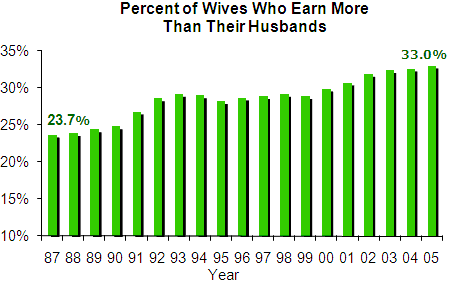IDEX Online Research: Jewelers: Women’s Earnings Continue to Rise
April 21, 08
DeBeers, diamond industry ad agency J. Walter Thompson, Hearts on Fire, and other jewelry suppliers and marketers are hammering this message home to retail jewelers: the self-purchasing female shoppers is very important to your business.
Some jewelers may think this is just another marketing ploy, but they’re wrong.
The latest figures from the U.S. Bureau of Labor Statistics (BLS) show that more women are working, and they are making more money than ever. Further, the wage gap between males and females is shrinking, and there is much less wage inequality especially among younger females in the workforce and their male counterparts. These young, wealthy, fashion-forward females represent a major opportunity for jewelers.
Perhaps the most important statistic is this: the latest figures show that a record level of one-third of all working wives earn more than their husbands. This group of consumers represents a major market opportunity for jewelers.
U.S. Work Force Continues to Grow
The Bureau of Labor Statistics recently released final annual employment figures for 2007. In addition, the U.S. Census Bureau has also released population statistics for the U.S. The following table summarizes the latest American population and workforce statistics.
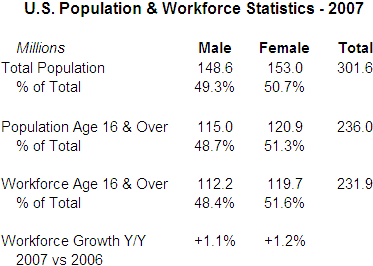
The key statistics are these: the male workforce grew by 1.1 percent while the female workforce grew by 1.2 percent. In other words, more and more women are working, earning their own money, and, most importantly, spending their own money.
Female Participation Rate in Workforce Growing; Male Shrinking
In 1973, 78.8 percent of all civilian men age 16 and over were in the U.S. workforce, with the balance in government work or the military. By 2007, the percentage of all civilian men in the workforce had dropped to 73.2 percent. In addition to the growing government workforce (not included in these figures), there are more stay-at-home husbands than ever before.
Conversely, the number of females in the workforce continues to rise. In 1973, about 44.7 percent of all civilian females age 16 and over were in the workforce. By 2007, this ratio had risen to 59.3 percent, after peaking at around 60 percent earlier in this decade.
The graph below illustrates the percentage of men versus women who are in the U.S. civilian workforce by year 1973-2007. Consumers are considered to be eligible for the workforce when they attain the age of 16.
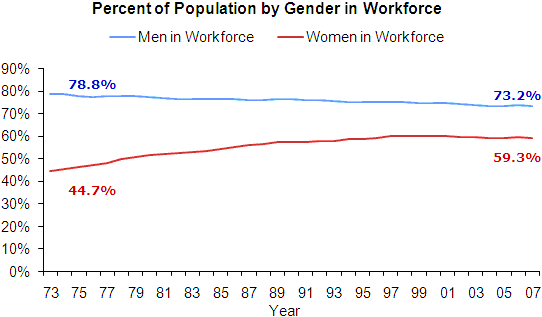
Gap Closing on Wage Inequality by Gender
Historically, women have been paid less than men for essentially the same job. While women can vote, can own property, and are considered to be equals in the Western culture, there continues to be wage inequality.
However, the gap in earnings between men and women is closing. Here’s what this means for jewelers: the female worker has just about as much money to spend as their male counterpart. Further, females tend to have more discretionary income, since men have traditionally been responsible for household expenses such as the mortgage payment.
In 2007, women employed full-time in the U.S. earned about 80.2 percent of the amount that a male earned in the same job. This is up dramatically from 1979, just under 30 years ago, when women earned only 62.1 percent of the amount that a man earned in a similar job.
The graph below illustrates the closing wage disparity by gender in the U.S. market.
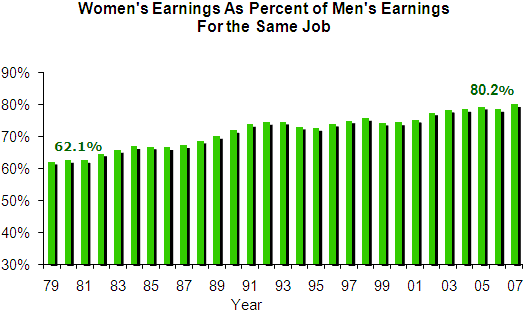
Wage Disparity Much Less Among Young Women in Workforce
Even more important, wage disparity is far less among younger consumers. Across all ages, women earn about 78.7 percent as much as a man in a similar position. However, among 25-to-34 year olds, women earn 88.2 percent as much a man in a similar position.
Young women have been demanding – and receiving – equitable wages. This is good news for jewelers. These young female consumers are fashion-oriented, they have their own money (lots of it), and they are willing to spend it on themselves (self-purchase).
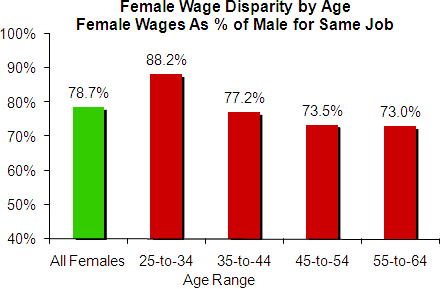 |
One-Third of Wives Earn More Than Their Husbands
The BLS has been keeping wage and earnings statistics by gender at the household level since 1987. That year, 23.7 percent of all wives earned more than their husbands. Over the past two decades, this ratio has risen steadily to 33.0 percent in 2005, the latest data available.
This opportunity for jewelers is to target these high-income females who have the money to spend, and apparently are willing to spend it on fashion goods such as jewelry.
The graph below illustrates the growing number of wives who earn more than their husbands.
